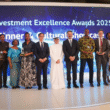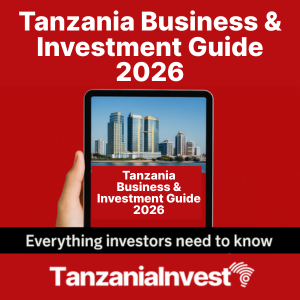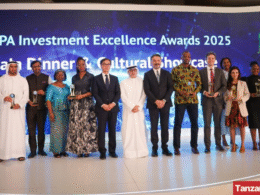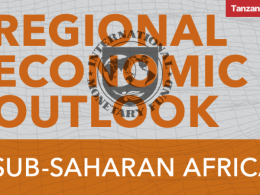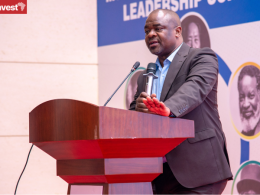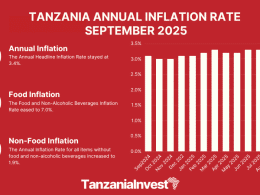TanzaniaInvest had the pleasure to conduct an exclusive interview with H.E. Dr. Jakaya Kikwete, President of the United Republic of Tanzania from 2005 to 2015.
In the interview, TanzaniaInvest and President Kikwete discuss the current state of the economy and the government forecasts for the coming years, the investment opportunities available, the upcoming oil & gas industry, and the government commitment to reach the country’s 2025 vision to take Tanzanians out of poverty and become a Middle Income Country.
TanzaniaInvest: Tanzania is a brilliant example of a developing country experiencing sustained economic growth, with GDP growth consistently averaging 7% for the last ten years. How do you explain these impressive macroeconomic performances? Will such strong growth continue?
Jakaya Kikwete: When you look at the Tanzanian economy, having been in situations where at some point we had negative growth and difficulties, certainly the strong macroeconomic performances we witness now are a function of the implementation of economic reforms and sound economic policies that were introduced in the second half of the 1990’s, aimed at bringing our macroeconomic indicators back on track.
However, I believe we should be able to do much more. 7% GDP growth is not adequate at our level of development meaning our level of poverty. Being a Least Developed Country (LDC) we want to move people out of poverty and for that, we need a higher growth rate.
We were almost there and then the global economic crunch hit us in 2009 when our GDP growth rate went down to 6%, although expectations were 5%, which is proof of the level of resilience that the Tanzanian economy has reached.
We expect a GDP growth rate of 7.2% this year [2014] and if everything goes well we will reach 8-10% in the medium term.
TI: Within this growth vision, which roles are Foreign Direct Investments (FDIs) expected to play?
JK: FDIs have a critical role because where there is no investment there is no growth. That’s why we are very keen on receiving constant inflows on investments, both international and local.
As a poor country obviously there is not much investment available locally therefore we look at attracting more FDIs and we have been successful in doing so. In 2005 we received USD 150 million worth of FDIs while in 2013 we received USD 1.7 billion.
TI: You have been very active in showcasing Tanzania internationally as an investment destination of choice, and indeed very successful looking at the strong increase in FDIs. What is your message to investors?
JK: One thing we tell prospective investors is that opportunities abound in Tanzania, in all economic sectors: agriculture, mining, oil & gas, manufacturing, tourism, you name it.
When looking at the broader spectrum, first and foremost there are opportunities to invest in agriculture, with plenty of arable lands, conducive weather and ground and surface water.
There are opportunities in agro-processing, livestock, leather production and manufacturing, for example of cotton.
One thing we tell prospective investors is that opportunities abound in Tanzania, in all economic sectors: agriculture, mining, oil & gas, manufacturing, tourism, you name it.
If you look at mining, Tanzania is so blessed. All minerals known to exist in the heart crust can be found here, and some in huge quantities, such as gemstones or industrial minerals like coal, iron, nickel, ore, gold, silver… And within minerals, there is still a lot that has not been exploited yet.
So the key message is that in Tanzania there are plenty of opportunities.
But there is also the geography of Tanzania that comes into play. We border eight countries, six of which are landlocked. Hence Tanzania is a great place to locate a business for transit trade, you can make Tanzania an international logistics hub; is almost a captive market.
The investment climate is permissive. Of course, there is a need to improve some flows here and there. The last evaluation from the World Bank [Doing Business Report] has not been so kind. For this, the institutions involved in the BIG RESULT NOW (BRN) initiative have been asked to undergo a diagnostic study to assess what is holding back investments, what are the challenges to investors, what are the issues.
We are now awaiting the results of such diagnostic to analyze them and take the necessary actions to make the investment climate even more conducive.
Most of all Tanzania has experienced uninterrupted peace and stability for the last 50 years. So investments in Tanzania are safe and actually, the constitutional process we are undergoing will further strengthen and consolidate the democracy and the rule of law.
But most of all Tanzania has experienced uninterrupted peace and stability for the last 50 years. So investments in Tanzania are safe and actually the constitutional process we are undergoing [Tanzania is currently revising its constitution] will further strengthen and consolidate the democracy and the rule of law, and improve the government bodies’ effectiveness and tackle vices in society such as corruption.
In a nutshell, there are better days ahead of us.
TI: Agro-processing and manufacturing are energy-consuming, with Tanzania still experiencing power shortages. Will the natural gas resources solve the issue once and for all?
JK: I agree with you all these opportunities need supportive infrastructure such as energy, telecoms, roads and so on.
This is why infrastructure development is a key sector on which we have a serious focus. First and foremost we are not producing enough power. We have been working on suppressed demand. We have been overdependent on hydropower with our dams not receiving enough water, and this is the main reason for the power shortages.
But Tanzania is blessed with plenty of energy sources, such as natural gas and coal, as well as green energy sources like wind and sun.
In regards to natural gas, we are currently building a major gas pipeline from Mtwara [next to the main discoveries of offshore natural gas] to Dar Es Salaam.
The new pipeline will also connect with Songosongo [currently active gas field] to bring more gas.
If everything goes well by December 2014 the new gas pipeline will reach Dar Es Salaam. Meanwhile, TANESCO [the Tanzania Electric Supply Company] is building the related power station, in partnership with international companies to produce 3,000 MW of energy by 2016.
With that, we think the power shortages problem will be solved.
We are also working on the coal deposits in Mchuchuma and Mangaka, with new annex power stations.
In regards to wind energy, we are already investing in Singida, while we are also welcoming investors in solar energy production.
TI: How will you ensure that the gas industry will be attractive enough for the investors while benefitting Tanzania’s wider population?
JK: In regards to the investors, the production sharing agreements that we negotiated provide both the investors and us with a rightful share. Our model ensures it is a win-win between the investors and the Tanzanian government. Before sharing revenues, investors are allowed to depreciate the whole of the capital invested, which I think is a fair arrangement for all of us.
The production sharing agreements that we negotiated provide both the investors and us with a rightful share. Before sharing revenues, investors are allowed to depreciate the whole of the capital invested.
In relation to how to use revenues judiciously so that all Tanzanians benefit from them, we are training our people to acquire the skills required by the industry. This is something new for us and we need to ensure that not only foreigners but also Tanzanians are included in the generation of employment this industry will bring.
For this, at the University of Dar Es Salaam and of Dodoma we have now special courses for jobs skills that are required by the gas industry. We are also sending young Tanzanians to study all over the world to acquire those necessary skills and so be able to take up employment within the gas industry.
Our vocational training schools are also tailoring courses for technicians to work in the industry. This is one aspect of sharing wealth.
But of course, there will be a lot of money coming to the government of Tanzania. Today we have so many plans but not enough government resources, so we ask donors and the private sector for support, without actually collecting enough. But during these times in the near future, I think this problem will not be there anymore. The question will be how to spend such money judiciously and effectively and for this good leadership and good plans will be key.
To successfully anticipate that, we are learning from other countries that went through the same, such as Norway and Abu Dhabi, where they established sovereign wealth funds with strict modalities on how to spend the resources generated from the gas industry.
We expect by October 2014 that the Tanzanian parliament will have enacted a law to create [a sovereign wealth] fund so that revenues are used judiciously for the benefit of the current as well as the future generations of Tanzanians.
We expect by October 2014 that the Tanzanian parliament will have enacted a law to create such fund so that revenues are used judiciously for the benefit of the current as well as the future generations of Tanzanians.
TI: The Tanzanian national budget still relies on foreign donors’ support. Do you think such reliance could disappear with the revenues from natural gas?
JK: It will take some time, as we are still a young developing nation. As we earn revenues there will come a point in time where we will have done a lot for ourselves but now at this level where we still have to build key infrastructures, it is such a daunting task for which we need huge amounts of money.
The current revenues the government is collecting are not enough. Even if we were able to collect 30% of the country’s GDP in taxes, this remains 30% of the GDP of a poor country.
At this point in time, we definitely need development assistance for infrastructure development like roads, railways, ports, power stations. Still, we have tried hard to reduce the level of dependence on foreign donors. When I came into office in 2005 the proportion of the national budget that was provided by foreign donors was 44%, while today it is 22%. But again I wish we could get more support for all we need to do.

TI: In this sense, you have been a fervent promoter of the Private-Public Partnerships (PPPs). How successful has been this instrument in welcoming private investment for infrastructure development in Tanzania?
JK: Many of our people in the public sector still believe the government can do it all. As a consequence, when asked to look for and venture with private capitals, they do not feel comfortable. This is why PPPs are still a work in progress but I am sure we will get there.
TI: Tanzania’s vision is to become a Middle Income Country (MIC) by 2025. According to the World Bank, Tanzania’s GNI per capita in 2012 was USD 570, while it needs to reach USD 1,036 to become a MIC. Is it feasible to double the GNI per capita in 13 years? What are the instruments in place to ensure you reach such an ambitious goal?
JK: It is feasible. When I came in office our GNI per capita was USD 360. [Now it is USD 570]. With the huge resources that will come up from natural gas we should be able to get there.
The vision 20205 was devised in the year 2000. When I came into office I called for a review and evaluate where we stood according to such vision. We so discovered what needed to be done: we needed to do a more structured development. Hence we came up with a long perspective plan covering 15 years, and 3 medium-term plans covering 5 years each.
We are currently implementing the first five years development plan [2011/12-2015/16]. There is hence a clear vision of where we are going and how to get there.
Of course mobilization of resources is the most critical factor.
With the clarity of the PPPs that involves the contribution of the government, the support from the donor community and the involvement of private investment, we will be able to get there.
With the development of infrastructures, natural resources, the promotion of agriculture and agribusiness, manufacturing and tourism, I am sure come 2025 the GNI per capita of Tanzania will be the one of a Middle Income Country.



